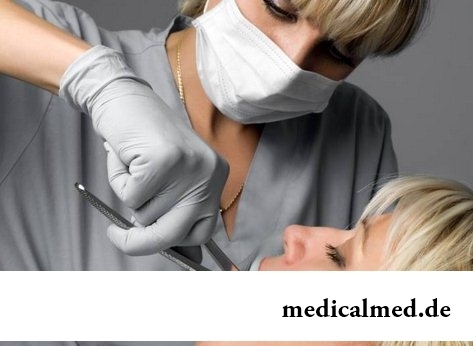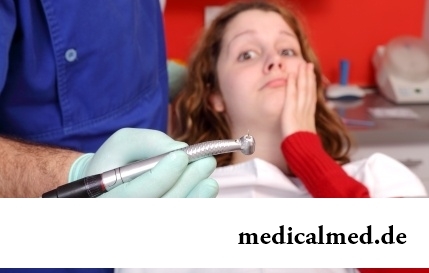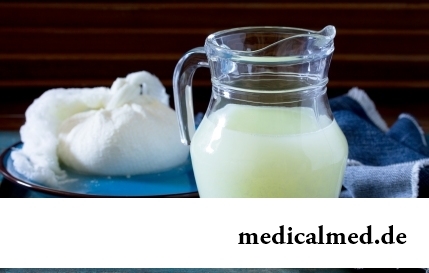





Odontectomy
Exodontia several centuries ago and today

Such known and, frankly speaking, not palatable procedure as an odontectomy has quite official medical name – an ekzodontiya. It is applied by the person since the most ancient times, but it should be noted that several centuries ago the odontectomy was used generally in the blood-thirsty purposes – for intimidation and tortures of objectionable people. Eventually functions of an ekzodontiya changed a little, but from it it did not become less dangerous. Up to opening of antibiotics and adequate tools, removal of a nerve of tooth and other dental procedures were connected with quite real risk of a lethal outcome. In other words, people quite often died of various infections which to them were brought by homebrew doctors.
For the first time more or less safe method of an odontectomy was opened by the medieval stomatologist Gui de Choliac. He invented "a tooth pelican" - the original device by means of which it was possible to take accurately injured tooth together with a root. Thanks to "pelican", it was possible to make even a wisdom odontectomy, and it that you knew, one of the most difficult and labor-consuming procedures in stomatology. "The tooth pelican" of Gui de Choliaca enjoyed popularity up to the end of the 18th century when it was succeeded by more modern technologies and tools.
Today the exodontia and nerves continues to remain the responsible and difficult operation demanding from the performer of a certain skill level. Besides, after forced removal of the injured tooth the person often has serious complications. For this reason stomatologists prefer to resort to surgical intervention only when it is really necessary to save patients from infections, inflammations and other risks.
Main reasons for an exodontia
- considerable injury of tooth by caries or development of an infection;
- the diseases of gums extending to healthy fabrics of the maxillary device;
- destruction of teeth as a result of accidents, fights and other external influences;
- the odontectomy is made and if it hampers the normal growth of other teeth;
- special case – a wisdom odontectomy which in case of the wrong germination can change symmetry of the person and a bite.
Exodontia methods
Today two ways of an exodontia – simple and surgical gained distribution. The first means extraction of visible tooth by local anesthesia. During the procedure of an odontectomy the stomatologist uses special tools which allow to raise tooth and to extend it from a cavity. Before it tooth is loosened to break integrity of fabrics of a parodont and to facilitate performance of a task.
The surgical method of an odontectomy is applied when access to the injured tooth is complicated, for example, when it was not cut through up to the end or has the broken-off crown (an upper part). Before operation on an odontectomy the dentist is obliged to conduct full examination of the patient to choose an optimum technique of intervention. In one cases it will be reasonable to carry out a jawbone section, and in others – to be limited only to excision of soft tissues. Let's notice also what in some situations happens it is impossible to make an odontectomy (complications lead to too serious consequences). In such cases the stomatologist makes the decision on crushing of tooth and its extraction in parts.
Features of an odontectomy of wisdom
The wisdom tooth often is the reason of problems with health because it cannot normally be cut through. It leads to discomfort at a chewing of food and to other serious effects, in particular: to the increased risk of developing of infections, development of inflammatory process, puffinesses and a pain syndrome. If in time not to make an odontectomy of wisdom, complications, sooner or later, it is mentioned healthy fabrics, will begin to promote development of tumoral and cystous processes. The timely odontectomy of wisdom will save you from similar problems and will allow to keep for many years healthy teeth and an attractive smile. Consider only that only professionals as its roots are in depth of a gingiva have to do an odontectomy of wisdom and have the most bizzare shapes that considerably complicates extraction process.
In brief we will tell also about possible problems which are shown after a wisdom odontectomy:
- pain syndrome, emergence of hypostases in the field of soft tissues;
- long bleeding;
- hole inflammation;
- difficulties with opening of a mouth;
- the traumatizing nerves leading to numbness of lips, teeth and an oral cavity;
- damages of prostheses or next teeth;
- the jaw fracture caused by big pressure which the surgeon puts upon the damaged site of an oral cavity.
If there was the wrong odontectomy, complications sometimes have very much and very serious effects. For example, inflammatory process can begin to extend to healthy fabrics. Certainly, it leads to new problems and the next removal of the injured teeth.
What to do if tooth after removal hurts?

Any intervention, not to mention such serious procedure as removal of a nerve of tooth, involves pain and discomfort. However, you can minimize negative effects if you follow the simple rules:
- refrain from the use of food, at least, within 3 hours after an odontectomy;
- in day of operation postpone the planned campaign in a sauna or a bath;
- do not eat too hot food;
- do not touch the pruritic place with language or any foreign objects;
- for 2-3 days refuse toothbrushing;
- limit exercise stresses as they can cause new bleedings.
Many people strive to get up from the dental chair right after a wisdom odontectomy. You should not do it. Even after simple extraction of the patient has to sit quietly 10-15 minutes. In case of surgical intervention at an odontectomy it is better to prolong this term till one o'clock that blood managed to thicken and close a wound. Besides, within several days after an odontectomy you have to observe all recommendations of the doctor and provide postoperative care of an oral cavity. At severe pains it is necessary to accept soothing drugs (except aspirin and aspirinosoderzhashchy means which liquefy blood).
If all of you did correctly, but all the same there are complaints of a look "tooth after removal hurts", then it means that you develop any complications. In this case it is necessary to see a doctor for the prevention of adverse changes and, perhaps, carrying out repeated operation again.
During life the average person develops neither more nor less two big pools of saliva.

EKO, or extracorporal fertilization - a method of treatment of infertility which became the reason of a set broken mines in due time...
Section: Articles about health
Statistically, in Russia about 34% of citizens smoke. Most of consumers of tobacco has problems with health sooner or later. Not only smokers, but also their relatives suffer. Besides, cigarettes are expensive, and need of their acquisition heavy bry...
Section: Articles about health
About 10-15 years ago existence of the computer in the apartment of the Russian was considered as a rarity and office rooms were only at the first stage of equipment by these useful devices. Today practically in each house there is a computer (and often not one), and a regular user is already every our second compatriot. Convenience and efficiency of personal computers are undoubted, but the people working with them daily have to know also about health hazard which they can predstavlit...
Section: Articles about health
About 20% of the population of our planet have a hypertension (permanent increase in arterial pressure). This disease negatively narrations...
Section: Articles about health
Not everyone can brag of the shining Hollywood smile. Even the person who is regularly visiting the stomatologist and watching of oral cavities over health periodically has problems: enamel of teeth darkens under the influence of some products, on it I accumulate...
Section: Articles about health
The endocrine system carries out extremely important role in a human body, practically all processes of life activity are regulated by it. Closed glands (hemadens) produce special biologically active agents – hormones which then get to a blood channel and are transferred to bodies addressees, or as they are called still, to target organs. Frustration of this mechanism are fraught with development of serious chronic pathologies....
Section: Articles about health
The main role in development of a peptic ulcer of a stomach and duodenum the bacterium Helikobakter plays pilor. Activity and Wuxi...
Section: Articles about health
Statistically, can only one of ten of our compatriots brag of a decent condition of an oral cavity. Six teeth affected with caries are the share of the average Russian. For comparison, this indicator for Europeans almost six times exchanges...
Section: Articles about health
Practice of use of table salt in the therapeutic purposes contains not one century. Applications which do by means of the fabric impregnated with saline solution are considered especially effective. They have antibacterial and antiinflammatory effect, help to heal wounds, exempt fabrics from excess liquid. Hypertonic salt solution of potassium chloride is applied outwardly at many morbid conditions. Let's tell about the most known of them....
Section: Articles about health
Hemorrhoids – extremely widespread disease. Periodically arising inflammations and bleeding of hemorrhoidal nodes пр...
Section: Articles about health
Diseases of joints often begin imperceptibly for the person. The first stages of destruction of the cartilaginous tissue providing soft and free sliding of heads of bones in joint bags proceed slowly and absolutely without serious consequences. Especially unpleasantly for that this пр...
Section: Articles about health
Some people consider what for medicine of the 21st century of secrets in the field of health of the person almost does not exist. It absolutely not so. The more answers scientists receive, the more the most difficult questions are raised for them by life. Besides, there are diseases which are not explained with science in any way of which existence people know for 100-150 years. These diseases meet not so often, but from some of them nobody is insured....
Section: Articles about health
At this plant there are a lot of names: tuberiferous sunflower, Jerusalem artichoke, solar root, earth pear. Contrary to spread...
Section: Articles about health
The problem of diagnosis was and remains to one of the most important in medicine. From that, the reason of an indisposition of the patient will be how precisely defined, eventually success of treatment depends. In spite of the fact that the majority of the diagnostic methods applied in about...
Section: Articles about health
Milk and products of its processing by right occupy one of the main places in a diet of the modern person. They contain proteins, necessary for normal life activity, fats, vitamins and microelements, and are an important part of various medical diets....
Section: Articles about health
Life of the modern woman is very difficult. Opportunities to realize itself are wide: it not only education and career, but also most differently...
Section: Articles about health
We live during an advertizing era. Daily each person receives a solid portion of persuasive councils about what to eat to be healthy and successful. Products about which we will talk today are combined by the following circumstance: all of them are positioned as most...
Section: Articles about health
What woman does not dream of a beautiful and thick hair? While physicians developed difficult schemes on hair transplant, in the industry of hairdresser's art a few years ago there was a sensation – methods of hair extension appeared. It would seem, dreams came true: though the procedure of building also does not belong to the category cheap, practically any woman can increase several times the volume of hair, change their length and color – generally, to become the real beauty queen....
Section: Articles about health
80% of women at least once to lives complained of discomfortable feelings to breasts, consolidations and nagrubaniye. These are mastopathy symptoms. Mas...
Section: Articles about health
Coffee - the tonic loved by many for the invigorating aroma and deep taste. Having the stimulating effect, coffee increases working capacity, promotes concentration of attention, fights against drowsiness and improves mood. Statistically, about 30% of inhabitants...
Section: Articles about health
Sometimes it seems that modern society was divided into two camps: representatives of the first are sure that only the woman has to be responsible for contraception, representatives of the second, respectively, are sure that it is destiny of men. Meanwhile the question of contraception has very many aspects – both psychological, and legal and, of course, medical....
Section: Articles about health
Use of medicinal plants in therapy is urgent today, more than ever. The drugs made of curative herbs cannot on...
Section: Articles about health
Each person has easy indispositions which he transfers "standing", trying not to ask for medical care. Arguments at the same time are adduced same: "it is a trifle, itself will pass", "I have too many important issues", "there are no wish to spend time on...
Section: Articles about health
It seems, quite recently you brought the baby from maternity hospital, but time flew by, and here it is already going to join the first in life children's collective. How to prepare the child for visit of a garden? What needs to teach him to facilitate adaptation process? What to tell and how to behave that the kid transferred changes in the life without serious consequences? Let's try to find answers to these questions....
Section: Articles about health
What is in our understanding weeds? It plants which are considered to be suitable only for compost pits and feeding жи...
Section: Articles about health
Statistically, pathologies of a thyroid gland in the world more than 500 million people have. Failures in work of this body lead to heavy disbolism, development of heart diseases, vessels, a reproductive and nervous system. In hard cases excessive...
Section: Articles about health
It is pleasant to state a possibility of improvement of quality of life of people with problems of functioning of secretory system. Efforts of talented inventors created products which will be able to provide normal life activity of clients with moderate degree of a disease, it is essential to facilitate the help to patients with strongly expressed disturbances....
Section: Articles about health
